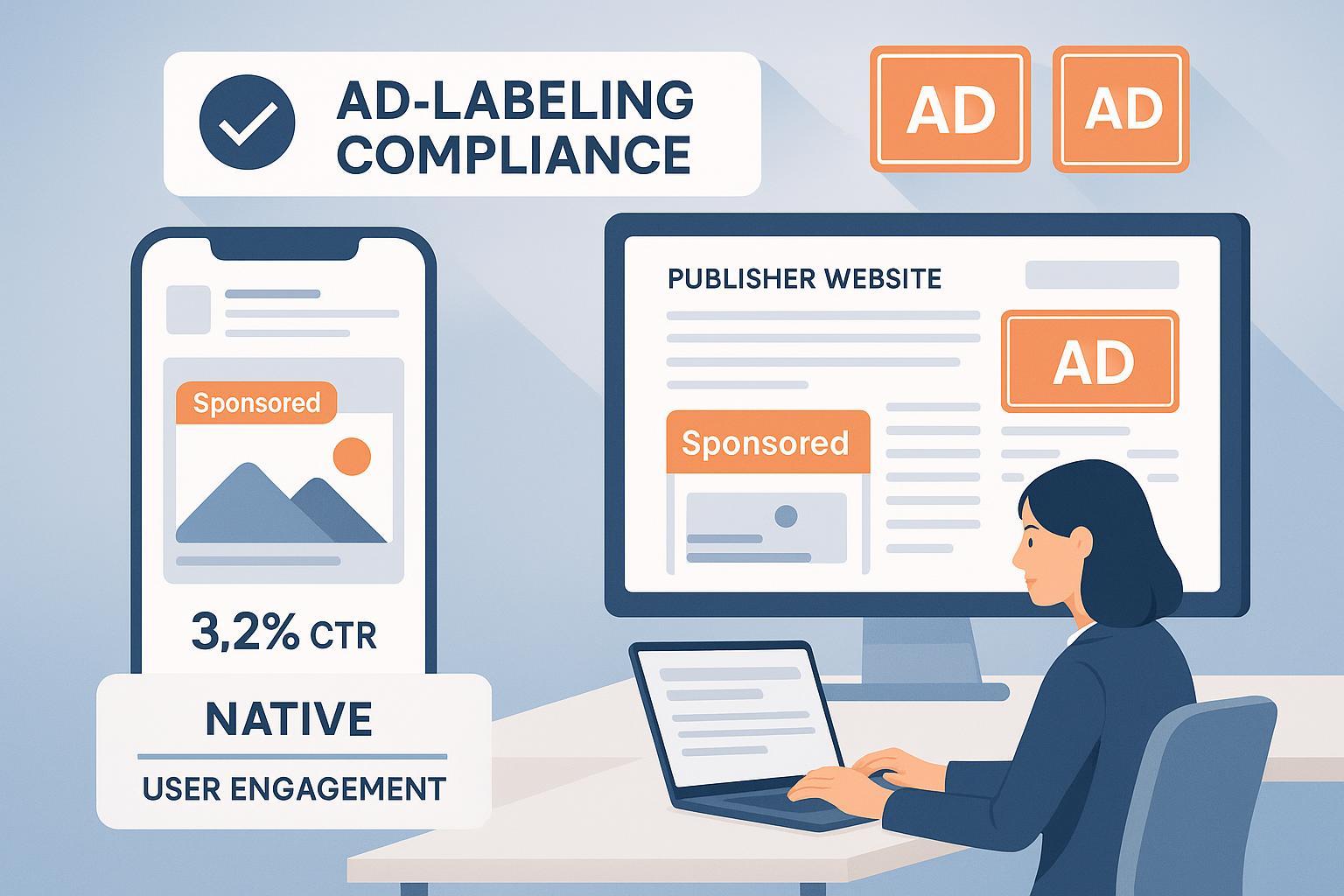What is Native Advertising? Definition, Examples & Digital Marketing Uses
Native Advertising explained: definition, key features, comparisons, and top examples for digital marketers. Learn how native ads work and drive results.


Native advertising is a paid advertising strategy in which promotional content seamlessly matches the look, feel, and function of the platform where it appears, ensuring minimal disruption to the user's organic experience while remaining clearly distinguishable as sponsored.
In-Depth Explanation
Native advertising is engineered to blend into a publisher's content ecosystem—social feeds, editorial platforms, or even search and discovery widgets—so that the ad feels like a natural part of a user's browsing journey. According to the Interactive Advertising Bureau (IAB), these paid placements are formatted to mirror the surrounding editorial or user-generated content. The goal is to enhance engagement, boost trust, and avoid so-called "banner blindness."
Technically, native ads are served primarily via programmatic auctions. As outlined in Outbrain's industry resource, when a user accesses a webpage or app, ad slots trigger real-time bidding between demand and supply-side platforms. The winning ad is automatically styled to match platform typography, tone, image size, and experience—be it in-feed, content recommendation, video, carousel, or app-native forms.
Key Components of Native Advertising
- Format Integration: Ads mimic the design and content type of the surrounding platform—such as news articles, social posts, or video streams.
- Programmatic Delivery: Utilizes real-time bidding and dynamic creative optimizations for personalized, device-appropriate experience.
- Disclosure & Labeling: Mandated clear indications (like "Sponsored," "Promoted," or "Ad"), adhering to guidelines from regulators such as the FTC.
- Performance Tracking: Metrics include click-through rate (CTR), repeat engagement, conversion, and time on content. Advanced campaigns leverage A/B testing and attribution models.
- Content Customization: Creative assets are tailored per platform for relevance—images, calls-to-action, and headlines align with user interests and the publisher’s editorial voice.
Practical Applications & Examples
Native advertising is omnipresent across today's digital landscape:
- Social Media: In-feed sponsored posts on Facebook, Instagram, LinkedIn, and Twitter, blending with organic content yet labeled "Sponsored."
- Publisher Sites: Content recommendation widgets at the bottom of news articles (e.g., Taboola, Outbrain), and app-native ads within streaming or news apps.
- E-Commerce/Search: Promoted listings or shoppable posts resembling unpaid content.
Case in Point: Brooklinen's 2023 campaign achieved 15% higher conversion rates and three times lower CPC via native ads versus traditional social placements. Michelin's native efforts delivered a 16% lower cost per visitor compared to social ads, validating the format's effectiveness in competitive, content-driven verticals.
Native Advertising vs. Related Concepts (Quick Matrix)
| Format | Placement Style | Owner/Creator | Disclosure Required | Example Use Case |
|---|---|---|---|---|
| Native Advertising | Matches platform | Brand | Yes | In-feed/promoted post |
| Sponsored Content | Editorial match | Publisher/Brand | Yes | Brand-commissioned article |
| Branded Content | Brand-centric | Brand | Sometimes | Brand videos/mini-sites |
| Advertorial | Editorial mimic | Brand | Yes | Print or online article |
| Display Advertising | Separate/banner | Brand | Yes | Web banners/pop-ups |
Compliance and Ethical Considerations
Native advertising must always comply with FTC and IAB standards, requiring that sponsored content is clearly disclosed and never misleads users. Transparency is crucial—ambiguous labeling or placement may lead to regulatory action and reputational risks.
Related Concepts & Extensions
- Sponsored Content: Longer-form, often publisher-created pieces designed to educate or entertain while promoting a brand.
- Branded Content: Content fully controlled and distributed by the brand.
- Advertorial: Traditionally print, now digital, these mimic editorial articles but are overtly promotional.
- Display Advertising: Visual banners and pop-ups—more disruptive, less integrated.
- Programmatic Advertising: The algorithmic buying/selling that underpins most native placements.
- Content Marketing: Broader strategy encompassing both paid and organic editorial content for brands.
Native advertising sits at the intersection of brand storytelling and paid media, making it essential for digital marketers aiming to drive engagement without sacrificing transparency or user trust. For further reading, consult the IAB’s official guidelines and review case studies by Outbrain for hands-on examples.





